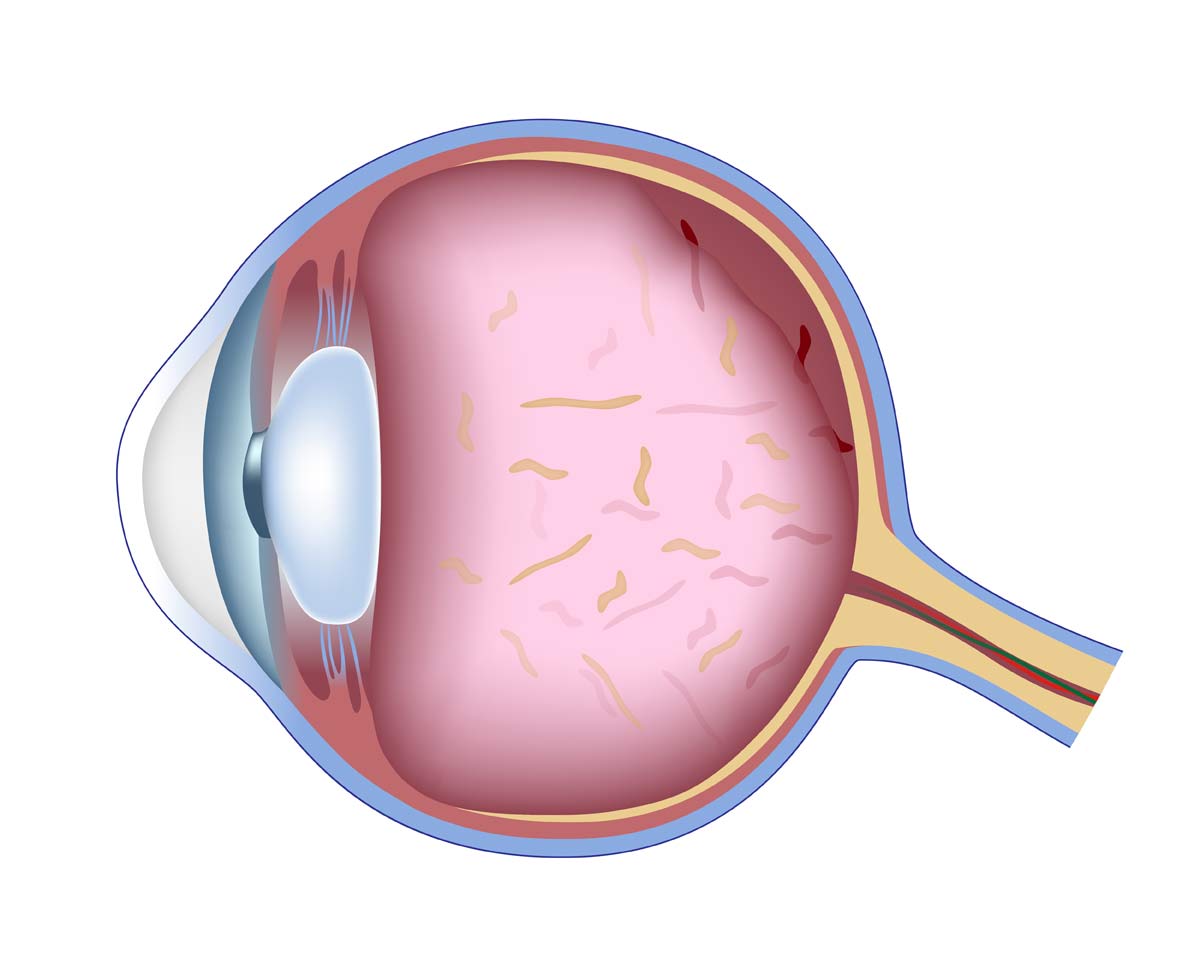Dr. Friedman's Office: (210) 880-3000
Flashes and Floaters
Let’s say you are in your mid-forties, and so far, you have been pretty happy with your eyesight. You are going about your daily business, and all of a sudden, out of the corner of one of your eyes, you notice repeated flashing lights, like lightning. Soon after, you notice a swarm of black or gray spots throughout your field of vision. When you close one eye, the spots are gone, but if you close the other eye, it looks like you are looking through a snow-storm or a bunch of gnats. Maybe it looks something like this:

These symptoms could be the result of vitreous traction causing a retinal tear.
Let’s start at the beginning, the vitreous is a gel-like substance that fills the eye and helps form it when we are developing in the womb. From that point on, it serves as a clear substance that allows light to pass through and focus on the retina so we can see the outside world. Starting at age 2, this vitreous gel breaks down into water (kind of like leaving a jar of jelly in the refrigerator for a really long time). This means that throughout life, we have an eye full of gel and water. Every so often, one of these clusters of gel casts a shadow on our retina, and that is your typical vitreous “floater” that everybody complains about.

At about ages 40 to 50, the vitreous gel starts to separate from the back wall of the eye. In some people, it happens sooner than others, and in some it happens later. This is a completely natural process that should happen to everybody at some point in their life and is known as a posterior vitreous detachment (PVD). In 90% of people, their PVD happens without consequence, but every so often the gel holds on a little too tight. When this happens, the gel can rip the retina and cause a retinal tear. When the gel pulls on the retina, it causes light flashes because the retina itself doesn’t feel pain. When it is stimulated, it causes you to see light. If the tear frees up any pigment or blood into the vitreous gel, this can cause you to see a snowstorm of floaters.
Having a retinal tear is serious, but it is not a terrible thing. You will not lose your eyesight from just having a retinal tear. The problem is that once there is a tear in the retina, the fluid inside the eye now has a path to get underneath the retina and cause a retinal detachment. Fortunately, this only happens to 1 in 10 people with retinal tears, but the consequences of a retinal detachment are very serious including significant loss of vision. That is why most eye doctors treat these tears, in order to prevent a retinal detachment.
So, what should you do if these symptoms occur? Don’t panic. Although there is some urgency to this situation, remember that the odds are in your favor. When you get a new floater in the eye, it might just be that you are having a PVD. There is only a 1 in 100 chance that it is a retinal detachment. Still, the situation could be a threat to your sight. Therefore, call your ophthalmologist (Eye MD) to set up an eye examination. It would be helpful to be seen within 24 hours of the symptoms occurring in case there is an associated retinal detachment.
If you are found to have a retinal tear without any fluid under the retina, it can likely be treated with a laser therapy. This treatment, known as laser retinopexy, has been shown to be very effective at preventing retinal detachment. A retinal tear might still progress to a retinal detachment despite treatment with laser, but the treatment helps minimize these chances about a-thousand fold. Many ophthalmologists have access to some form of laser, but you will probably need to see a retina specialist to treat these tears. If instead you have a retinal detachment, this is a problem that requires surgery (see section on retinal detachments).
Flashes and floaters can also be signs of other problems in the eyes. If you are having flashes at the same time in both eyes, this might be the sign of a migraine headache or other problems related to the brain. Floaters in one or both eyes might be a sign that the eyes have inflammation. One key point to remember is that retinal tears and detachments should be painless and only in one eye at a time.
Is there anything you should or could do to avoid retinal tears or detachments? The short answer is “no”. As stated toward the beginning of this material, a vitreous detachment is the natural course for the gel in the eye. The eyes are constantly moving back and forth, causing the vitreous to jostle around in the eye. As I tell most patients, “you could go around staring straight ahead for the rest of your life, but that is not how the eyes were meant to work.” So, go about your daily business and activities, but if you or your friends ever experience or talk about these symptoms, get them checked by an ophthalmologist to ensure that everything looks ok.
Duncan Friedman, M.D.
Retina Specialist
San Antonio, Texas


